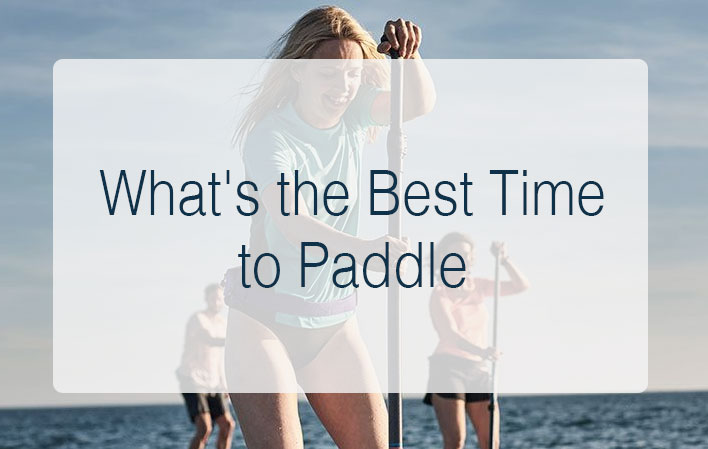iSUP or SUP is not just about the activity itself but also about the overall experience on the water. One crucial factor that can significantly influence your paddleboarding experience is the timing. Choosing the right time to paddle can impact the weather, water conditions, and even your own comfort and safety. In this guide, we’ll explore the best times to paddle, considering various factors and conditions.
Factors to Consider
Before delving into specific times of day, it’s essential to consider a few key factors that can affect your paddleboarding experience:
- Weather: Check the weather forecast for your area. Avoid paddling in extreme conditions such as strong winds, thunderstorms, or excessive heat.
- Tides and Currents: If you’re paddling in coastal areas, be aware of tide schedules and current conditions, as they can impact your paddle.
- Crowds: Depending on your location, popular paddleboarding spots can get crowded during certain times. Picking less busy times can lead to a more peaceful experience.
- Your Skill Level: Your experience level matters. Beginners might prefer calmer conditions and shorter paddles, while experienced paddlers might seek out challenging conditions.
Now, let’s explore the best times to paddle, considering these factors:
1. Early Morning (Sunrise)
- Pros:
- Calm water and fewer winds in the morning.
- Beautiful sunrise views.
- Peaceful and quiet surroundings.
- Cooler temperatures in hot climates.
- Cons:
- Early wake-up required.
- Water may be colder in some regions.
Early morning paddle sessions, especially around sunrise, offer a tranquil and serene experience. The water is typically calm, making it ideal for beginners or those who prefer a relaxing paddle. Sunrise paddles also provide an opportunity to witness breathtaking views as the sun paints the sky with vibrant colors.
2. Late Morning (Mid-Morning)
- Pros:
- Warmer water temperatures.
- More comfortable for late risers.
- Suitable for longer paddles.
- Cons:
- Crowds may start to gather.
- Wind and boat traffic can increase later in the morning.
Late morning paddles are great for those who prefer to sleep in a bit but still want to enjoy warmer water temperatures. However, as the day progresses, more people tend to head to the water, potentially leading to crowded conditions.
3. Afternoon (Early to Late Afternoon)
- Pros:
- Warmest water temperatures of the day.
- Ideal for longer paddles.
- More predictable weather patterns in some regions.
- Cons:
- Potential for increased wind in the afternoon.
- Crowds can be significant, especially in popular spots.
Afternoon paddleboarding sessions offer the warmest water temperatures, making them perfect for leisurely paddles and swimming breaks. However, keep an eye on the wind, which tends to pick up in the afternoon, potentially leading to choppy water.
4. Evening (Sunset)
- Pros:
- Calm and serene conditions.
- Stunning sunset views.
- Quieter surroundings as crowds disperse.
- Cons:
- Limited visibility as the sun sets.
- Cooler temperatures after dark.
Evening paddle sessions, particularly around sunset, provide a peaceful and picturesque experience. The water is usually calm, and the sunset views can be awe-inspiring. However, paddling after dark requires proper safety precautions and navigation equipment.
5. Night Paddling (Under the Stars)
- Pros:
- Unique and tranquil experience.
- Cooler temperatures in hot climates.
- Stargazing opportunities.
- Cons:
- Limited visibility requires proper lighting.
- Potential for encountering nocturnal wildlife.
Night paddling, done with the proper equipment, can be a magical experience. Paddling under the stars offers a unique connection with nature. Ensure you have proper lighting and take extra precautions for safety.
Conclusion
The best time to paddle ultimately depends on your preferences, skill level, and location. Each time of day has its unique advantages and considerations. It’s crucial to check local conditions, be aware of your abilities, and prioritize safety when choosing the time for your paddleboarding adventure. Whether you prefer the tranquility of sunrise paddles, the warmth of midday sessions, or the magic of night paddling, there’s a perfect time for everyone to enjoy the beauty of stand-up paddle boarding on the water.
Thesandshore.com is a source where the post What’s the Best Time to Paddle: A Guide to Timing Your Stand-Up Paddle Boarding Adventures appeared first.


